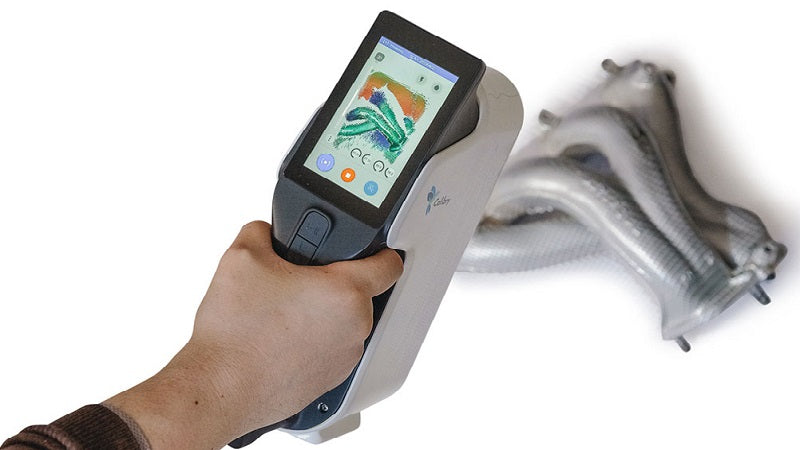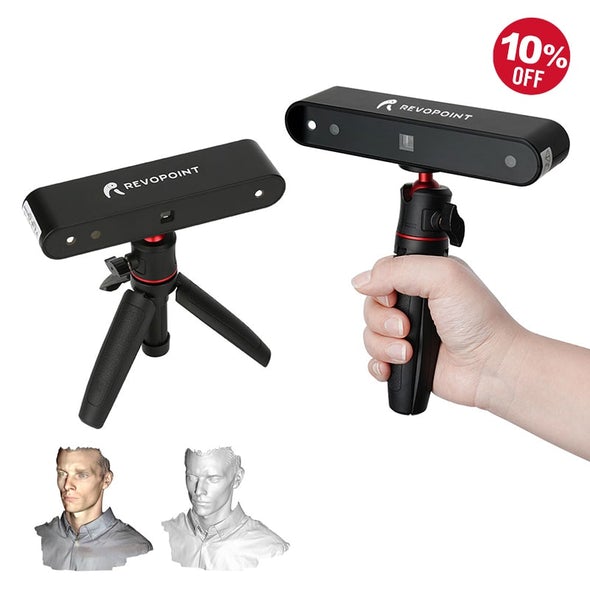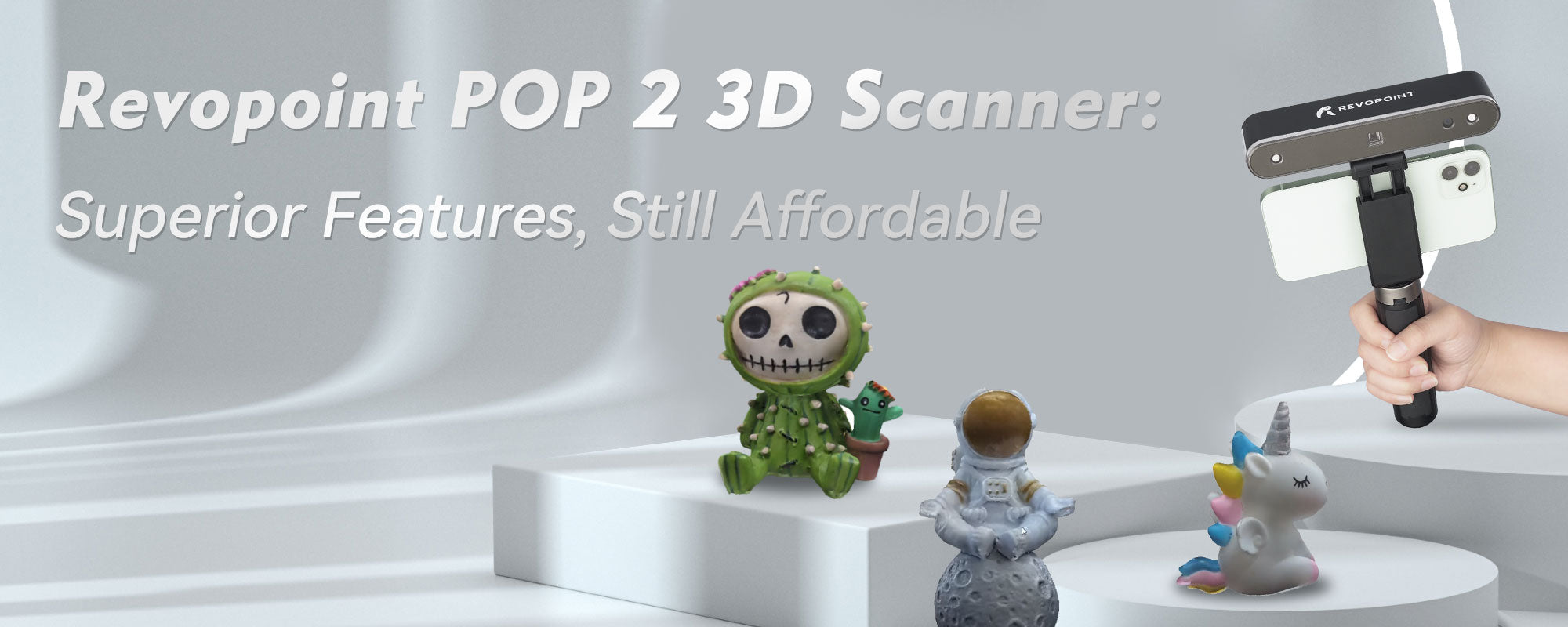The geometry of the subject being 3D scanned is typically calculated with structured light in handheld 3D scanners used in 3D photography. 3D laser scanners are used extensively in engineering, and they have many applications.
How it works:
To 3D scan someone with a handheld scanner, you have to have the person standstill while the scanner slowly scans around their body to determine their different body parts. The process usually takes about two minutes. Following the data collection, there is some manual matching of point clouds, and then a full 3D model can be generated after another 2-3 minutes.
Limitations:
For handheld 3D scanners, the most significant limitation is that people have to remain still during the scanning process to take a 3D selfie (also known as a 3D portrait). Even small movements can wipe out data and cause the entire scan to have to be restarted. These handheld scanners struggle to scan transparent materials (for example, lenses on glasses) and reflective surfaces (for example, shiny car parts).
Post-production:
Most scans of one individual consist of many smaller scans that must be matched either programmatically or manually, or a combination of both, depending on the software's data quality and sophistication. After the points clouds of the subject are matched and merged, a minimum amount of geometry retouching is required if the issue stays perfectly still.
If the person moves while taking a 3D selfie, then fixing the geometry may take a long time. It may be more efficient to scan the person again if the person moves while taking a 3D selfie. The amount of time it takes to touch-up texture problems can vary significantly and become quite dramatic, depending on lighting conditions and how much the subject moves during scanning. Handheld scanners cannot project consistent 360-degree lighting because they are handheld, producing uneven lighting and shadows requiring post-processing. Post-production touch-ups are more than capable of being performed by professionals.
Pros:
- Portable - a handheld 3D scanner can easily fit into a small briefcase and be taken anywhere. Installation usually takes no more than five minutes.
- Using structured light, handheld 3D scanners require much less computation than traditional DSLR photogrammetry systems since their depth calculation is based on structured light. It takes about two to three minutes to make a full 3D model.
- A structured light handheld scanner was designed to scan small, intricate parts, which is why they capture excellent detail.
Cons:
- To use handheld 3D scanners, subjects must remain still for 2-3 minutes. If they aren't, the model will be ruined or cause severe problems in post-production. You may even want to hold your breath while scanning. Handheld scanners are not suitable for monitoring most kids/pets (and even many adults).
- Lighting is critical to creating high-quality 3D scans, just like stock photography. The resulting scan from handheld scanners will have all the lighting inconsistencies present in the environment since the lighting cannot be controlled. Consequently, fixing the colors on the 3D scan in post-production can take an excessive amount of time.
- During the scanning process, handheld 3D scanners take pictures at regular intervals to capture detail, then blend the images into a single texture. Many different cameras come with handheld scanners, but many of them are not very high quality, meaning that the resulting photographs are poorer. Additionally, the blurring in the final texture is caused by the fact that the pictures are blended.
Conclusion:
For 3D selfies, handheld scanners are great for scanning objects with delicate details but not so good when scanning stationary objects. The efficiency and portability of handheld scanners have made them a popular choice in the past. Nonetheless, there are now specialized handheld 3d scanner full-body scanners that excel at scanning both people and animals at a similar price point, though they are less portable.



Leave a comment
All comments are moderated before being published.
This site is protected by hCaptcha and the hCaptcha Privacy Policy and Terms of Service apply.